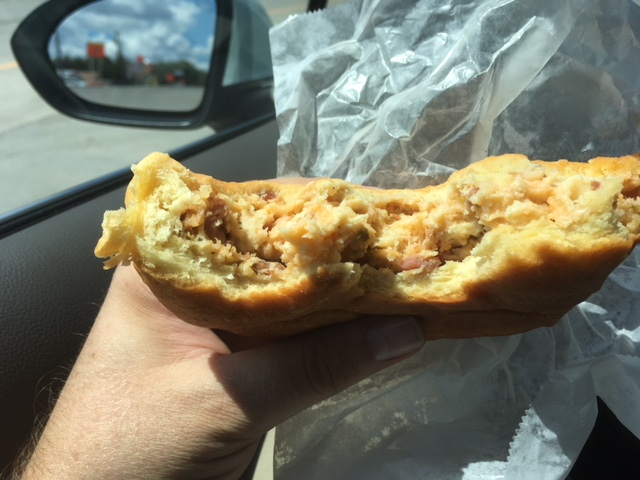
As of the end of July, Don Pablos, one of my favorite Tex-Mex restaurants, closed its doors at Rookwood Pavilion. It was the last location in Cincinnati, but its architecture lives on in four of the six other remaining locations. At one time there were Don Pablos locations in Symmes Township, Newport, Westchester, and Springdale. The company, founded in Lubbock, Texas, in 1985, filed bankruptcy in 2016, and started closing locations after that. At one time it was the country’s second largest full-service Mexican restaurant chain, with over 120 locations, runner up to Chi-Chi’s, which has since gone out of business.
Mark Redus, the chain’s father, found the old LeBlond Machine Tool Power Plant building at Rookwood in 1994. To his credit, instead of demolishing the plant, he hired a team of architects to renovate the space. They all agreed its open space had a sort of feel of a Mexican courtyard. They had the room to install a massive central colorfully-tiled fountain inside. With the mass of stringed lights and flags and fountain inside the building, it did indeed have that feel. Its 45 foot tall ceilings and open space made it the perfect place to meet friends for happy hour chips and salsa, fabulous margaritas, and decent Tex-Mex food. It was loud, boisterous, and a fun place to hang and gnosh. I always thought Don Pablos had great salsa and fajitas, which they served with hand-pressed tortillas. The open area allowed also Don Pablos to bring the theatre of hand pressed tortillas area out to the dining room for guests to see. It was all thoughtful architecture that bred great marketing.
The owners of the Don Pablos brand liked the architecture of the Leblond Power Plant in Cincinnati so much that they made that Rookwood location their prototype for new restaurants. I always wondered why the other Don Pablos I went encountered – like the one in Baltimore, Maryland – looked so much like the one in Cincinnati – with its large high ceilings and white fleur-de-lis accents on the red brick exterior.
The distinctive smoke stack at the Rookwood location was not replicated at other sites because of its expense. Although Mark Kiefer, former VP of Construction at Don Pablos, said it would be far too expensive to build the same scale of the Rookwood building from scratch, they maintained the same scale of the windows from the Rookwood location: 12 feet tall and seven feet wide. The red brick exterior mimiced that of old commercial buildings, and in modern strip malls, this thoughtful architecture was appreciated by city officials and residents.
It was especially appreciated in Gastonia, North Carolina, because it reflected the solid appearance of the area’s cotton mills, which were often built with brick to win the confidence of Northern investors.
The Don Pablos brand has been owned by a variety of companies since its inception, but its most recent, was the second to file for Chapter 11 bankruptcy, which they did in 2016.
There are six locations left – two each in Texas and New Jersey, and one each in Delaware and Maryland., four of which have the Rookwood-like architecture.
Unfortunately the preservationist architecture wasn’t enough to save bad management and changes in full service Mexican restaurants, but they should be applauded for their efforts to save and preserve power plant industrial architecture.











